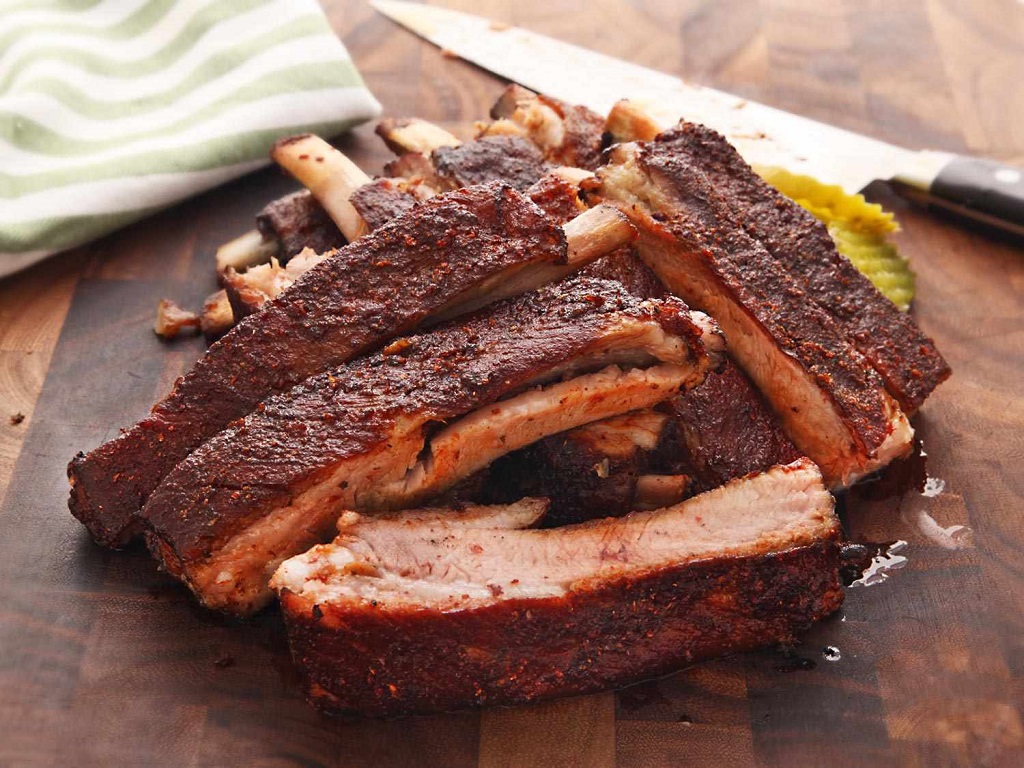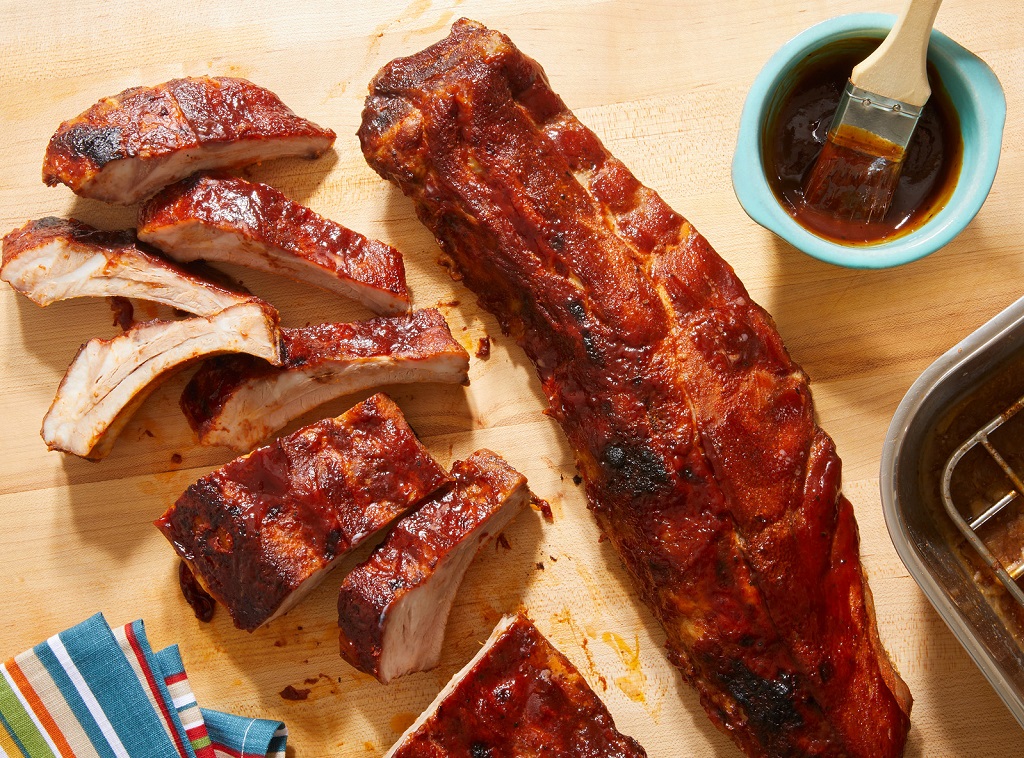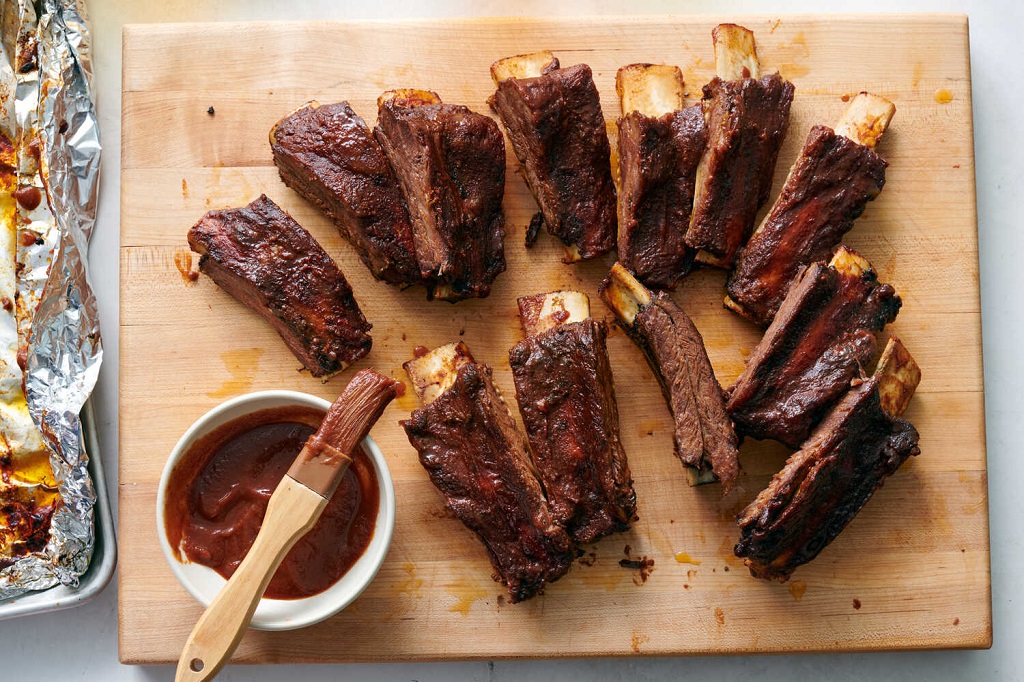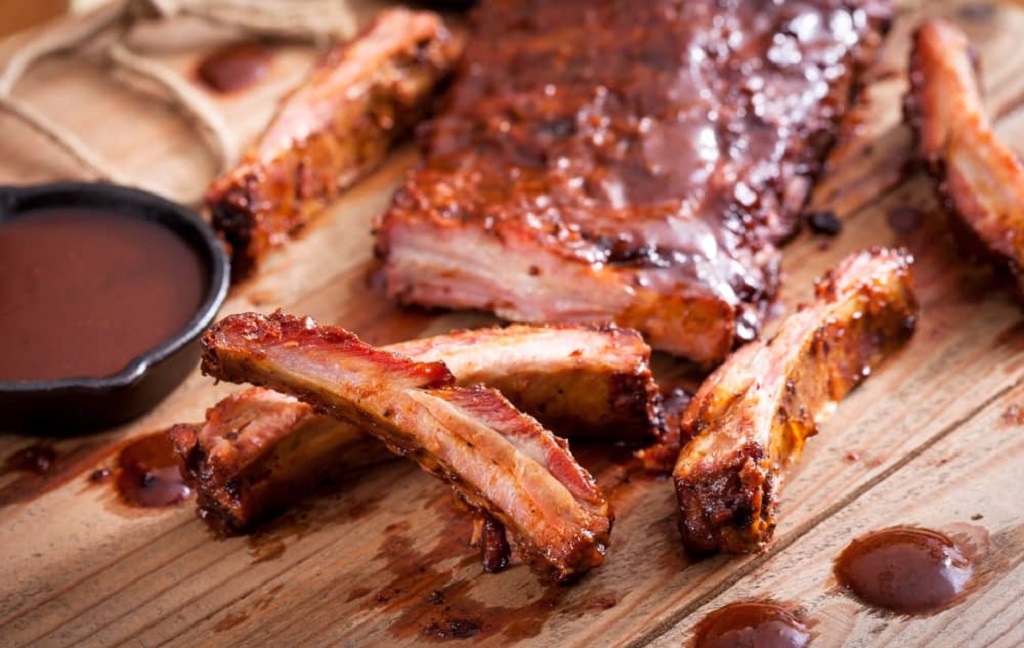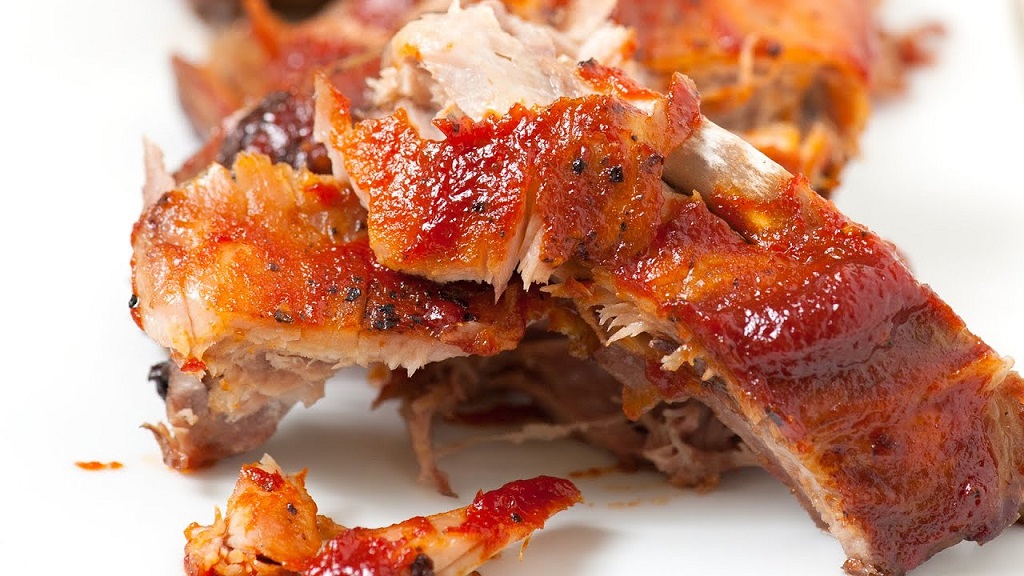The Ultimate Guide to Cooking Perfect Pork Ribs in the Oven
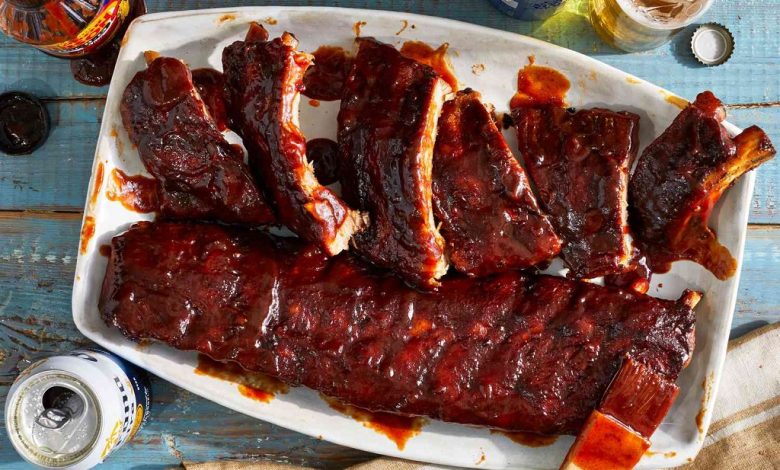
Pork ribs are a classic barbecue staple loved by many. Pork ribs in the oven’s rich, meaty flavor make them a favorite for backyard cookouts and tailgates. While grilling may seem like the default cooking method, the oven can be just as effective at producing fall-off-the-bone tender ribs.
Cooking ribs in the oven has some advantages over grilling. For one, it allows you to cook them for a longer period of time at a more consistent temperature. This tenderizes the meat and collagen even further. Oven ribs are great for larger gatherings since you can fit more slabs on a sheet pan versus grill grates. They are also less hands-on since you don’t have to continuously tend to the meat as you would on a grill.
Follow this complete guide to learn how to cook competition-worthy oven-baked ribs from start to finish.
Choosing the Right Rib Cut
The first step is selecting the right type of pork ribs to cook. There are a few different cuts to choose from:
Baby Back Ribs
- From the loin near the spine
- Most tender and lean with less fat
- Shorter cooking time
- More expensive
- Ideal for oven cooking
Spare Ribs
- From the belly near the sides and bottom of the ribs
- More fat marbling for flavor
- Need longer cooking to get tender
- More affordable
- Good for oven and grilling
Country-style Ribs
- From the blade end of the loin
- Marbled with fat like spare ribs
- Meatier like baby backs
- Moderate cook time
- Budget-friendly choice
St. Louis-style Ribs
- Trimmed spare ribs
- Rectangular shape
- Removes cartilage for tenderness
- Takes longer to cook than baby backs
- A great option for the oven
For the oven, I recommend choosing baby back or St. Louis-style ribs. Their shorter cook times make them ideal candidates. Spare ribs work as well but may need more time in the oven to break down the collagen in the tougher meat.
Selecting the Right Rib Rack
One of the benefits of oven ribs is that you can cook multiple slabs at once by using a rib rack. This vertical rack holds the ribs upright so they don’t sit flat in the juices, allowing them to cook evenly on all sides. It also saves space.
Look for a heavy-duty stainless steel rib rack that feels sturdy and stable. It should have wire racks with slots spaced 2-3 inches apart to hold 5 or more slabs. Nonstick coating helps prevent sticking. Consider a rack with a removable water pan if you want to add liquid for braising.
Also, pay attention to the rib slab lengths the rack can accommodate. Certain racks hold full slabs while others are designed for St. Louis or baby back rib cuts. Make sure to get the right size for the type and amount of ribs you plan to cook.
Select and Prepare the Ribs
The next step is choosing your slabs. For the best results:
- Look for ribs with meat that looks moist and red, not dried out.
- Choose ribs with a nice layer of fat marbling through the meat for flavor and tenderness.
- Calculate around 1/2-3/4 lb. per person so you buy enough.
- Avoid slabs with excess bone versus meat.
- Let ribs sit at room temperature for 30 minutes before cooking.
- Carefully remove the thin membrane from the back of the ribs. This can be done with a knife or paper towel.
- Pat the ribs dry with paper towels. Don’t rinse off excess rub later.
Now the ribs are prepped and ready for seasoning.
Creating a flavorful dry rub
One of the keys to finger-licking oven ribs is flavoring them with a spice rub before cooking. A good rib rub should:
- Complement and enhance the taste of pork without overpowering it.
- Form a flavorful, textured crust on the outside as it cooks.
- Permeate the meat with spice and aroma.
- Include a blend of sweet and savory flavors.
Here is a balanced pork ribs in oven rub recipe you can make at home:
Ingredients:
- 1/4 cup brown sugar
- 2 tablespoons paprika
- 1 tablespoon garlic powder
- 1 tablespoon onion powder
- 1 tablespoon chili powder
- 1 tablespoon mustard powder
- 1 tablespoon kosher salt
- 1 tablespoon black pepper
- 1/2 teaspoon cayenne pepper
Instructions:
- Mix all ingredients together thoroughly in a small bowl.
- Generously coat the entire surface of the ribs with the rub.
- Pat and press the rub into meat.
- Let sit for 5-10 minutes before cooking.
Feel free to experiment with your own blend using spices you enjoy. The rub can make the difference between good and great oven ribs.
Guide to Cooking Pork Ribs in Oven Low and Slow
Now for the fun part – actually cooking the ribs! Here is a step-by-step process:
1. Heat Oven and Rib Rack
- Preheat oven to 225-250°F. Low, slow cooking is key.
- Place the rib rack on a large-rimmed baking sheet.
- Add about 1/2 cup water to rack water pan for extra moisture.
2. Arrange Ribs on Rack
- Carefully place rib slabs meat-side up in rack slots.
- Try not to overlap ribs. Leave a little space between them.
- Put parchment on the bottom of the pan to catch drips if needed.
3. Cover Ribs
- Tent a sheet of foil loosely over the ribs when they first enter.
- This traps steam to break down connective tissues.
- Keep the foil tent on for at least the first half of cooking time.
4. Cook Low and Slow
- For baby backs, cook for 2-3 hours. Check at 2 hours.
- For spare ribs, cook for 4-5 hours. Check at 4 hours.
- For St. Louis, cook for 3-4 hours. Check around 3 hours.
- Cook times depend on oven temp and rib sizes.
5. Uncover and Finish
- Remove foil tent for 30-60 mins to set crust and sauce.
- Brush with sauce periodically to build a sticky glaze.
- Broil lasts 5 minutes if you want char. Watch closely to avoid burning.
- Remove ribs when meat is very tender and pulls back from bones.
6. Rest, Slice and Serve
- Let ribs rest for 10-15 minutes before cutting to finish cooking.
- Slice between bones into individual ribs.
- Serve ribs sauced or on the side. Enjoy!
The long, low cooking time allows the fat to melt slowly. This keeps the meat incredibly moist and allows the connective tissue to break down into gelatin. Be patient for fall-off-the-bone tender oven-baked ribs!
Oven Rib Cooking Variations
While low and slow cooking is the standard technique, there are some variations you can try as well:
- Braise in liquid: Add apple juice, beer, cola, or water to the pan. Tent tightly to steam and braise the ribs.
- Dry rub only: Omit sauce and finish with a spice crust. Use sugar in the rub for caramelization.
- Shorter cook time: Increase temp to 300°F+ for baby backs. Cook for 1-2 hours and check often.
- Parcook, then grill: First, cook ribs in the oven to soften the meat, then quickly grill to finish.
Don’t be afraid to experiment to find your ideal oven rib preferences. The options are endless.
Choosing the Best Sauces and Rubs
While dry rubs add lots of flavors, ribs are also enhanced by basting, glazing, or serving with sauce. Here are some sauces and spice combinations that pair especially well:
- BBQ Sauce – Classic sweet tomato-based sauce complements pork.
- Plum Sauce – Fruity tanginess cuts through rich rib meat.
- Teriyaki Sauce – Umami flavor from soy sauce and sweetness.
- Hoisin Sauce – Full-bodied, salty-sweet Chinese sauce.
- Jerk Seasoning is a spicy and robust Jamaican spice blend.
- Memphis Style Rub – Dry seasoning with chili, cumin, and brown sugar.
- Coffee Spice Rub – Wake up ribs with cayenne, coffee, and brown sugar.
Don’t limit yourself though. Get innovative with glazes and marinades too. From sweet jams to savory chutneys, the possibilities are endless.
Troubleshooting Oven Ribs
Follow these tips if your oven ribs don’t turn out right:
Ribs are tough and chewy:
- Didn’t cook at low temp long enough to break down collagen. Cook for a longer time at ~250°F.
- Ribs overlapped on a rack instead of individual slots. Leave space between.
- The membrane wasn’t removed from the ribs. Peel off with a knife before cooking.
Ribs are dry:
- The oven is too high. Use 225-250°F for low, moist heat.
- There is no water pan in the rib rack. Add water, juice, or broth.
- The foil tent is not sealed. Wrap tightly to trap steam.
Ribs burnt or overdone:
- The oven temperature is too high. Lower temp and check more frequently.
- Left in the oven too long. Stick to recommended cook times.
- Ribs not tented at the start. Tent for the first half of cooking time.
- The broiler was too hot. Broil at the end in short increments if needed.
Rub won’t stick:
- The rib membrane was not removed before seasoning. Peel the membrane off first.
- The meat was wet when the rub was done. Pat’s ribs are very dry.
- Rub doesn’t have enough binder or fat. Add a touch of oil or mustard.
Frequently Asked Questions
- Should ribs be cooked fat side up or down in the oven?
Cook ribs fat side up in the oven. This allows the fat to baste the meat as it renders down. The direct exposure to heat also crisps up the fat cap.
- What temperature should you cook ribs at in the oven?
The ideal oven temperature for ribs is between 225-250°F. This low, gradual heat is perfect for breaking down collagen over time without drying out the meat.
- How long does it take to cook ribs in the oven?
Cook times vary based on cut. Baby backs take 2-3 hours, St. Louis 3-4 hours, spare ribs 4-5 hours. Check tenderness starting at 2 hours. Go by tenderness, not time.
- Should you wrap ribs in foil when cooking in the oven?
Yes, wrapping ribs in foil is recommended, especially for the first half of oven cooking time. This traps moisture to braise the meat. Unwrap later to set the glaze.
- Is it better to cook ribs in the oven or on the grill?
Both cooking methods work well. Oven ribs involve less monitoring and can accommodate more ribs at once. Grilling imparts a smoky flavor from charcoal or wood. Try both to see which you prefer!
Conclusion
For finger-licking ribs with moist, fall-off-the-bone meat, the oven is just as capable as the grill at turning out mouthwatering results. Discover the ultimate culinary experience with the top kitchen tools for foodies, where precision meets passion. Elevate your cooking prowess as you master the art of low, slow-cooking pork ribs in the oven, allowing the collagen to break down fully, while a tantalizing spice rub and sauce complete these tender oven-baked ribs.
Ribs bring people together for food and fun. Now that you know the secrets to success, fire up the oven and start baking! These amazing oven-roasted ribs are waiting for you at your next backyard cookout, tailgate, or summer dinner.

